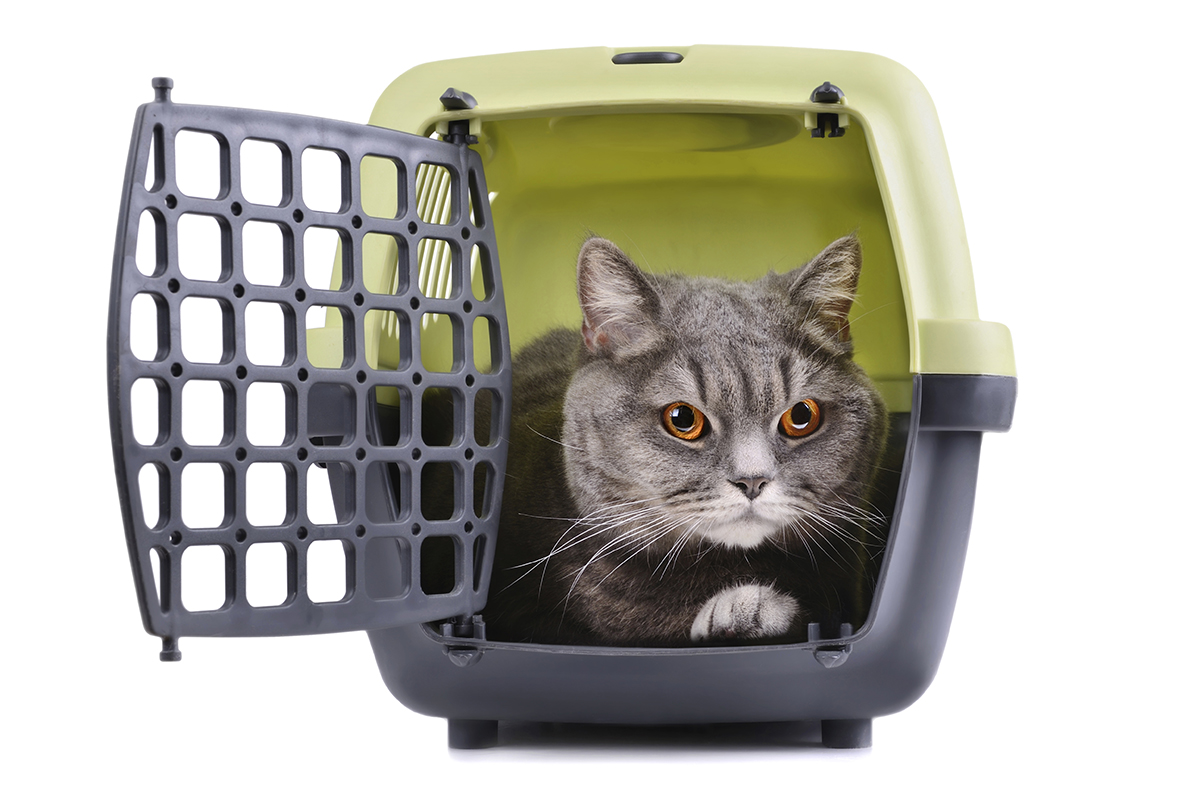We all know that moving from one home to another can be a difficult transition – and the transition from a shelter to a home can also be very difficult for cats and dogs. When bringing home a new pet it’s always good to remember that Fido or Fifi will need time to adjust to the changes in their environment and daily routine. Here is some helpful information to help ease your pet’s transition into your loving family.
Bringing Home a New Cat:
Have a room set up for your cat when you get home.
- It should be a relatively quiet, low traffic area where your cat can slowly get used to his/her new surroundings.
- The litter box, water & food bowls, toys, beds, etc. should all be placed in the room before you bring in the cat so they can explore the room as they enter.
- Cats love to hide and play so create some hiding places – such as cardboard boxes, or large blankets – so your cat has a place get away too, if needed.
- Block off any areas that are difficult for you to get to, without moving large obstacles or making lots of noise.

Keep in mind that the move from a shelter to a home, although beneficial, can cause some temporary behavior changes.
- Your cat may hide for the first few days, or may run from you when approached.
- Give your cat time to get to know you, offer lots of patience and love and your pet will surely come around.
Closely monitor your new cat’s eating patterns.
- Be sure to pay close attention to behavior, and eating patterns during the first week after you bring your cat home.
- Some cats, under stressful situations will refrain from eating, and retaining proper nutrition.
- Try to place food as close to your cat as possible, show him/her where you place it, and offer food with strong smells to encourage him/her to eat.
- Call your veterinarian if you feel your cat is not eating enough to receive proper nutrition, or having other problems eating.
Bringing Home a New Dog:
Try not to overcompensate for any hard times you feel that your dog may have experienced in the past by being too permissive.
Don’t feel that you need to constantly entertain your new pet. Moving from a cage into your home is stimulating enough for the time being.

Try to limit the amount of company you have for the first few weeks, to make the process less stressful for FIDO.
Give your dog time to adjust. Like any new relationship, this one also requires time, patience and understanding and each dog warms up at their own pace, which may differ from expectations.
A change of environment can trigger temporary behavioral problems. For example, some dogs will urinate in unexpected places, while others might to want to chew things. Some dogs may feel overwhelmed at first and want to hide or run away while others take a more defensive position. As “pack animals,” dogs will test you to find out where they stand in the social hierarchy of your family. Living in a cage provides little stimulation. In a new environment, a dog may become over-stimulated and become “”testy”” or hyperactive.
Ask for help. The team at North Shore Animal League America is committed to making your adoption a success. We offer support with behavioral issues through orientation classes, low-cost group training classes, private training, and educational literature and phone support. For more information on our Pet Behavior services visit animalleague.org/behavior or call 516-883-7900 ext. 342.
The most important thing to remember, whether you’re welcoming a new dog or cat, is to be patient. All animals are different and adjust at their own speed. Give yourself time to get to know your pet, and soon you’ll have a loyal and loving companion for years to come.



